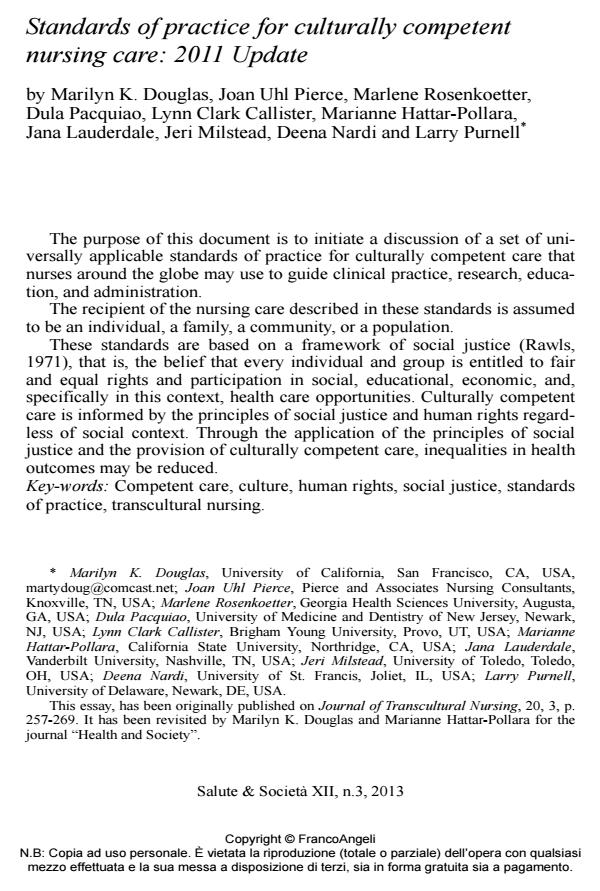Standards of practice for culturally competent nursing care: 2011 Update
Titolo Rivista SALUTE E SOCIETÀ
Autori/Curatori Marilyn K. Douglas, Joan Uhl Pierce, Marlene Rosenkoetter, Dula Pacquiao, Lynn Clark Callister, Marianne Hattar-Pollara, Jana Lauderdale, Jeri Milstead, Deena Nardi, Larry Purnell
Anno di pubblicazione 2014 Fascicolo 2013/3En
Lingua Inglese Numero pagine 31 P. 34-64 Dimensione file 673 KB
DOI
Il DOI è il codice a barre della proprietà intellettuale: per saperne di più
clicca qui
Qui sotto puoi vedere in anteprima la prima pagina di questo articolo.
Se questo articolo ti interessa, lo puoi acquistare (e scaricare in formato pdf) seguendo le facili indicazioni per acquistare il download credit. Acquista Download Credits per scaricare questo Articolo in formato PDF

FrancoAngeli è membro della Publishers International Linking Association, Inc (PILA)associazione indipendente e non profit per facilitare (attraverso i servizi tecnologici implementati da CrossRef.org) l’accesso degli studiosi ai contenuti digitali nelle pubblicazioni professionali e scientifiche
The purpose of this document is to initiate a discussion of a set of universally applicable standards of practice for culturally competent care that nurses around the globe may use to guide clinical practice, research, education, and administration. The recipient of the nursing care described in these standards is assumed to be an individual, a family, a community, or a population. These standards are based on a framework of social justice (Rawls, 1971), that is, the belief that every individual and group is entitled to fair and equal rights and participation in social, educational, economic, and, specifically in this context, health care opportunities. Culturally competent care is informed by the principles of social justice and human rights regardless of social context. Through the application of the principles of social justice and the provision of culturally competent care, inequalities in health outcomes may be reduced.
Parole chiave:Competent care, culture, human rights, social justice, standards of practice, transcultural nursing.
Marilyn K. Douglas, Joan Uhl Pierce, Marlene Rosenkoetter, Dula Pacquiao, Lynn Clark Callister, Marianne Hattar-Pollara, Jana Lauderdale, Jeri Milstead, Deena Nardi, Larry Purnell, Standards of practice for culturally competent nursing care: 2011 Update in "SALUTE E SOCIETÀ" 3En/2013, pp 34-64, DOI: